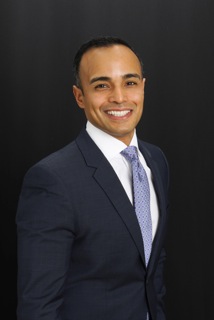
Radio World is checking in with business and technology leaders about the state of the industry as radio prepares for the NAB Show in April.
Chad Lopez is president of New York City station 77WABC, Red Apple Media, Red Apple Audio Networks and Red Apple Advertising Agency.
RW: In a sentence or two, how do you describe what your company does?
Chad Lopez: We are compelling content creators, both on a local and national level. We identify the most engaging moments in that content, apply the science to it, and amplify that content through our distribution channels.
Radio World: Heading into the NAB Show, what do you consider to be the most important business issue or challenge for radio executives right now?
Lopez: Radio’s biggest business challenge is correcting the false narrative that has permeated our industry that radio is dead. This has had a trickle-down effect from advertisers, to agencies, all the way down to how investors see us.
The days of high multiples are gone. Correcting the narrative is essential for radio groups and owners. The audio medium may be challenged by the ever-growing number of other media distribution choices and what’s going on with AM radio in electric cars; however, when you have station owners and groups that invest in the product. you see positive results in ratings. and revenue follows. From small businesses to large, when ownership invests in their product, so will Wall Street.
RW: What technologies or new media platforms are you watching closely, for their potential impact on how radio organizations do business?
Lopez: Streaming and digital assets can give advertisers more avenues for reaching our listeners, and it can combat the negative image that radio is an “old” medium. In terms of running a station, automation can run a board, but you don’t get rid of the people. You move them into content creation. You need the human element to know if what’s being said is of interest to the audience. We need to learn how to use automation to our advantage and enhance the product by freeing those employees to focus on creating additional content that our listeners are yearning for.
RW: Generative artificial intelligence was last year’s big buzz topic. Has it met expectations for its impact in radio?
Lopez: No. It may have aided the music format to some degree but it has not met expectations, in particular for news/talk/sports format, which requires an “active foreground,” a “personality.” You can’t replace that with a computer. Listening to music is passive listening, you are doing other things while that is playing in the background, but with news/talk/sports you are listening to what is said, thinking about whether you agree or disagree or how that affects you; AI could never successfully replace this format.
The product on all formats, however, suffers. A computer is not going to generate the human element of interaction and intimacy, which is exactly what makes radio a terrific medium for not only reaching but influencing audiences. This is what we need to push, over and over again, in our dialogue with advertisers, agencies and investors.
RW: Over the next three years, what will be the most important change or evolution in how radio companies are run?
Lopez: Radio has always had an intimacy that other mediums cannot replicate. This intimacy should be the focus of these businesses going forward.
There are many ways to get in front of your audience digitally; however there is still an appetite for that connection that only radio provides. This means in many ways reverting back to what radio was, when radio stations were seen in the streets. Radio needs to get back to grassroots strategies, whether it comes down to events or doing live remotes, we need to create experiences on radio, inside the station and out. In a world where you are fighting for the audience’s attention, we have to engage our listeners by continuing to create great content, and gain more of their time spent listening.
Unfortunately, for most companies this means reducing inventory and finding other ways to make up that revenue. But those who choose to invest in their product will experience meaningful ROI.
RW: What else should radio managers be thinking about?
Lopez: Many subscribe to the notion that people under 30 don’t want to work in radio, let alone AM radio. We are building a younger audience, and that should be an important topic for everyone in radio. Part of building a younger audience is building a younger staff that is invested in the medium.
In our company, a large percentage of the staff are young, which is incredible for a news/talk property. I started an internship program at the station that has been wildly successful. We have had numerous interns return every summer only to eventually come to work for us.
Two of those former interns are now the leaders of their respective departments. I love having conversations with them. They make me more passionate about radio; they make the entire staff excited. And they make their friends excited about AM radio, which helps us grow a younger audience too.
Having a younger staff involved in the product is a long-term investment.










